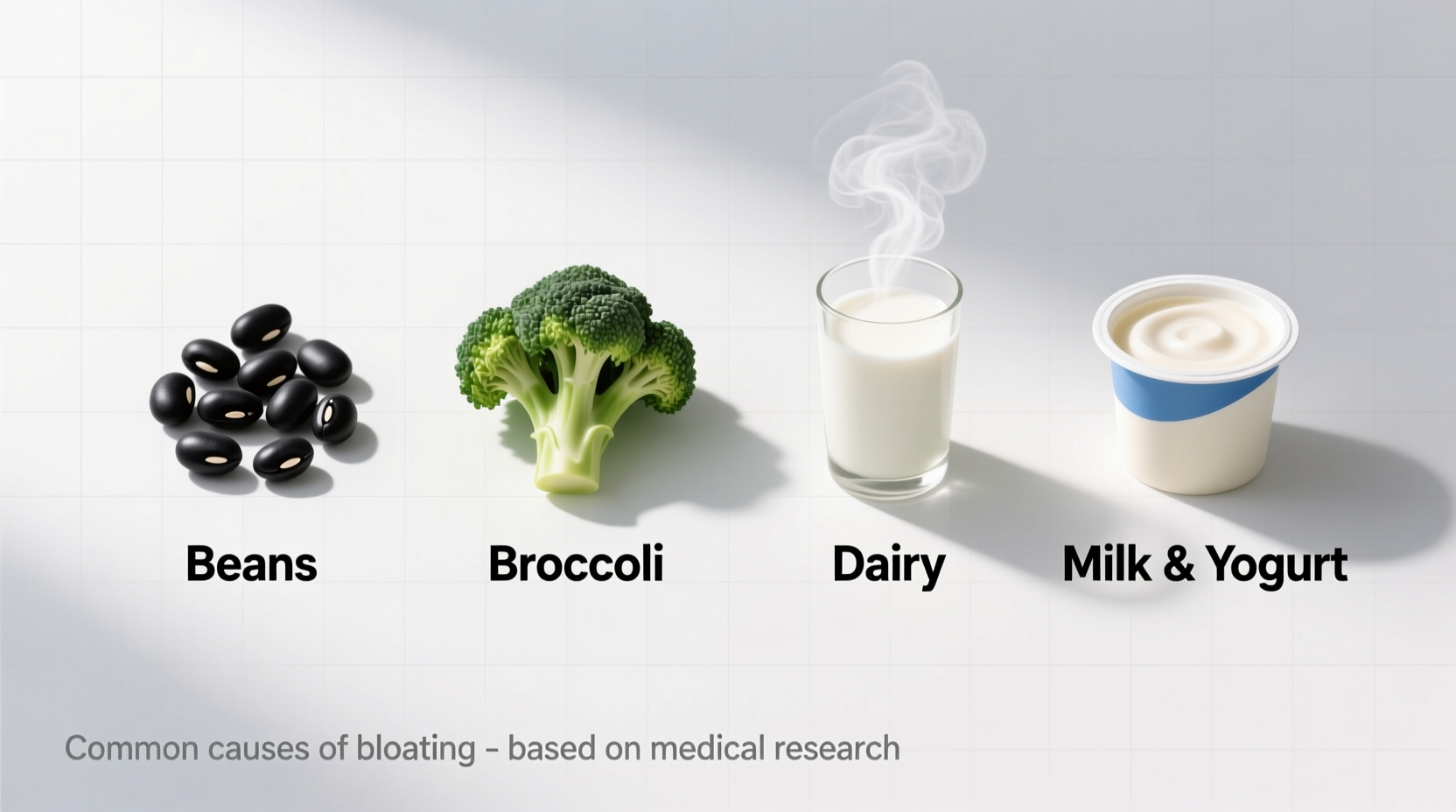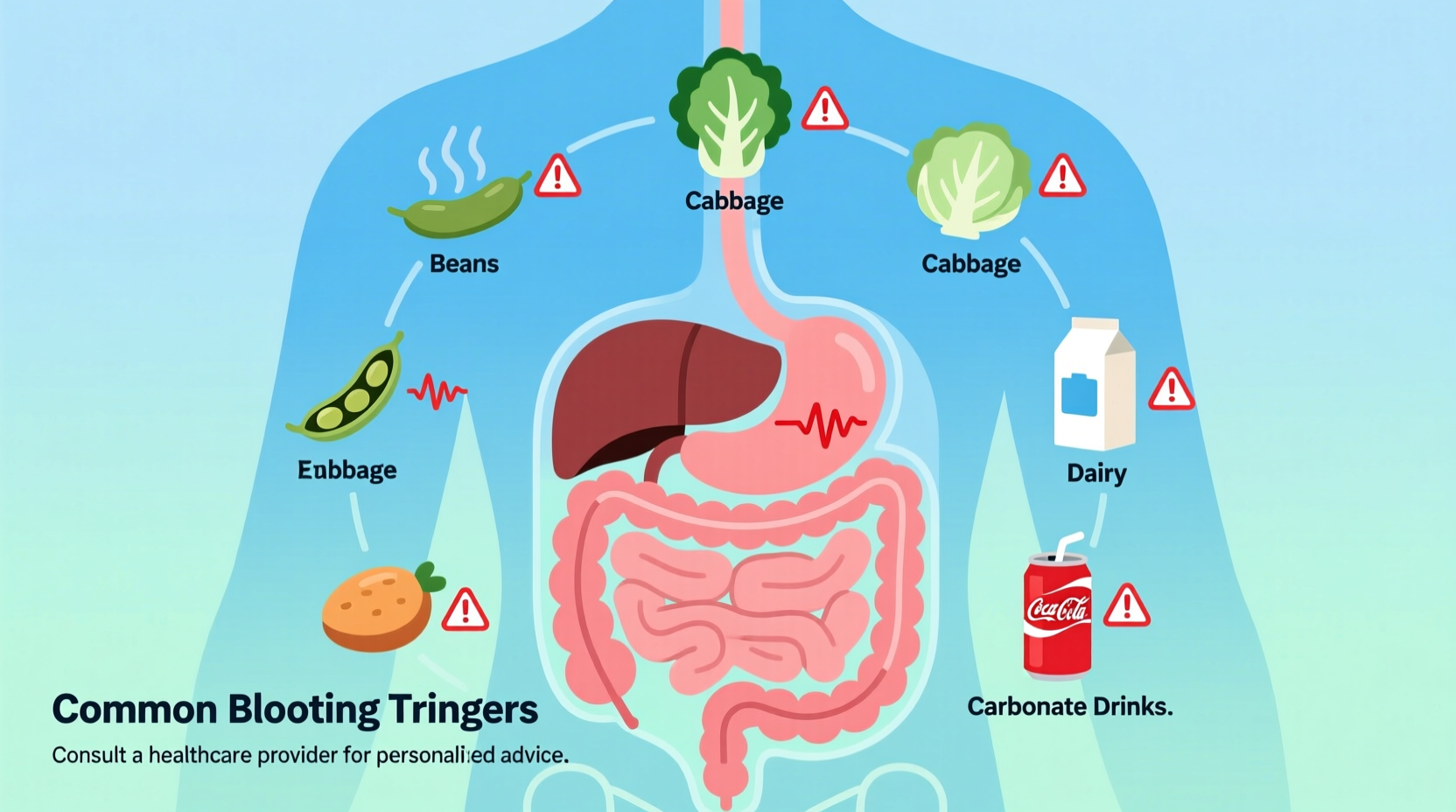If you've ever felt uncomfortably full after meals or noticed your stomach expanding like a balloon, you're not alone. Approximately 16-30% of adults regularly experience bloating, according to research published in the National Institutes of Health. Understanding which foods cause bloating is the first step toward digestive comfort. This comprehensive guide examines the science behind food-induced bloating and provides practical solutions backed by gastroenterologists and nutrition researchers.
Why Certain Foods Trigger Bloating: The Digestive Science
Bloating occurs when gas builds up in your digestive tract, causing pressure and discomfort. Certain foods cause bloating because they contain specific compounds that either produce excess gas during digestion or draw water into the intestines. The primary culprits fall into several categories:
- High-FODMAP foods: Short-chain carbohydrates that ferment in the gut
- Fiber-rich foods: Particularly when consumed suddenly in large quantities
- Lactose-containing foods: For those with lactose intolerance
- Gas-producing compounds: Like raffinose in beans
The Mayo Clinic explains that individual digestive systems vary significantly in their ability to process these compounds, which is why some people experience severe bloating from certain foods while others don't.
Top Foods That Cause Bloating: A Comprehensive Guide
1. Legumes and Beans
Beans, lentils, and chickpeas contain raffinose, a complex sugar that human enzymes can't break down. When this sugar reaches your large intestine, gut bacteria ferment it, producing hydrogen gas. Soaking beans before cooking and changing the water multiple times can reduce this effect by 20-30%, according to research from the National Library of Medicine.
2. Cruciferous Vegetables
Broccoli, cauliflower, cabbage, and Brussels sprouts contain raffinose and high fiber content. While these vegetables offer significant health benefits, their sulfur compounds and fiber can cause gas production. Cooking these vegetables thoroughly breaks down some of the problematic compounds, making them easier to digest.
3. Dairy Products
For the 65-70% of the global population with some degree of lactose intolerance, dairy products like milk, soft cheeses, and ice cream can cause significant bloating. Lactose intolerance occurs when your body doesn't produce enough lactase enzyme to break down milk sugar. Hard cheeses and fermented dairy like yogurt typically cause less bloating because they contain less lactose.
4. Wheat and Gluten-Containing Grains
Wheat, barley, and rye contain gluten and fermentable carbohydrates called fructans. For people with non-celiac gluten sensitivity or irritable bowel syndrome (IBS), these can trigger bloating. The Harvard T.H. Chan School of Public Health notes that sourdough bread, which undergoes longer fermentation, may be better tolerated than regular bread.
| Food Category | Bloating Severity | Timeframe After Eating | Alternative Options |
|---|---|---|---|
| Beans & Legumes | High | 6-8 hours | Soaked lentils, mung beans |
| Cruciferous Vegetables | Moderate-High | 4-6 hours | Cooked zucchini, carrots |
| Dairy Products | Variable* | 30 min-2 hours | Almond milk, hard cheeses |
| Wheat Products | Moderate | 2-4 hours | Quinoa, oats, rice |
*Severity depends on individual lactose tolerance levels
5. Artificial Sweeteners
Sugar alcohols like sorbitol, mannitol, and xylitol (common in sugar-free gums and candies) are poorly absorbed by the small intestine. When they reach the colon, they draw water into the bowel and ferment, causing gas and bloating. The European Food Safety Authority notes that consuming more than 10g of sorbitol daily can cause digestive discomfort in sensitive individuals.
Individual Variability: Why Your Experience Differs
Not everyone reacts to bloating foods the same way. Your unique gut microbiome composition significantly affects how you process certain foods. Research shows that people with higher levels of specific gut bacteria may experience less bloating from beans, for example. Additionally, your digestive system can adapt over time—gradually increasing fiber intake allows your gut bacteria to adjust, reducing bloating symptoms.
Practical Solutions for Managing Food-Induced Bloating
Track Your Personal Triggers
Keep a detailed food and symptom diary for 2-4 weeks. Note:
- What you ate (including portion sizes)
- When you ate it
- When bloating symptoms began
- Severity of symptoms
This personalized approach is more effective than generic bloating food lists, as individual reactions vary significantly.
Cooking Techniques That Reduce Bloating
Certain preparation methods can make problematic foods more digestible:
- Soaking and rinsing: Soak beans for 8-12 hours, changing water 2-3 times
- Cooking with digestive spices: Add cumin, ginger, or asafoetida when preparing beans
- Gradual introduction: Increase fiber intake slowly over weeks
- Thorough cooking: Cook vegetables until tender rather than serving raw
When to Consider Professional Help
Consult a healthcare provider if you experience:
- Bloating that significantly impacts daily life
- Unintended weight loss
- Blood in stool
- Symptoms that persist despite dietary changes
These could indicate underlying conditions like celiac disease, inflammatory bowel disease, or other digestive disorders that require medical diagnosis and treatment.

Final Thoughts on Managing Bloating Through Diet
While certain foods commonly cause bloating, your personal experience may differ. The key is understanding your unique digestive responses and making informed choices. Remember that many bloating-trigger foods are nutritionally valuable—rather than eliminating them completely, focus on preparation methods, portion sizes, and timing that work for your body. Gradual dietary changes combined with mindful eating habits often yield the best results for long-term digestive comfort.











 浙公网安备
33010002000092号
浙公网安备
33010002000092号 浙B2-20120091-4
浙B2-20120091-4